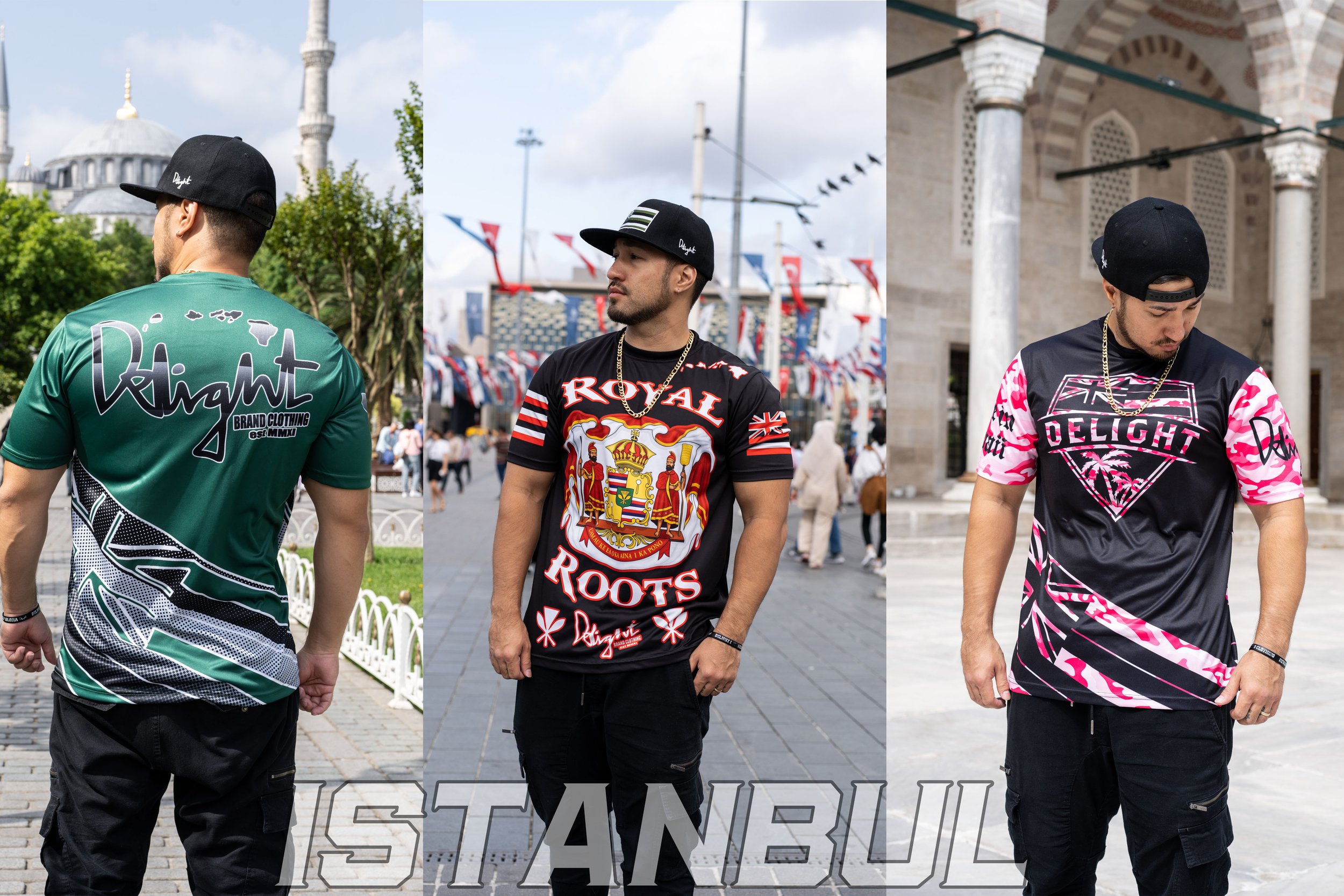The Relevance of Sustainable Apparel: Exactly How It Influences the Atmosphere and Your Storage room
Sustainable clothing is increasingly identified for its essential function in decreasing the environmental impact of the fast apparel industry. By concentrating on green materials and ethical production approaches, it addresses pressing ecological problems. This shift not just profits the earth however additionally influences consumer options, bring about a more thoughtful approach to closet administration. Recognizing these dynamics raises crucial questions about style's future and personal obligation fit it.
The Environmental Impact of Quick Fashion

Advantages of Lasting Materials
Sustainable materials use considerable advantages, especially via environment-friendly textile selections that minimize environmental damage. These materials likewise show longevity and longevity, lowering the need for regular substitutes. As a result, they contribute to an extra sustainable apparel industry and advertise liable customer actions.
Eco-Friendly Textile Selections
While the fashion business has actually long been connected with fast fads and ecological harm, the increase of environment-friendly fabric choices offers a transformative chance. Sustainable products such as natural cotton, hemp, and Tencel have gotten appeal because of their lower ecological effect. These textiles are typically generated without dangerous chemicals and require much less water, reducing their carbon impact - Branded Clothing. Furthermore, several environmentally friendly fabrics are naturally degradable, contributing to a circular economic climate by minimizing waste. Selecting sustainable products not only supports ecologically liable practices however additionally advertises healthier ecosystems. As customers come to be more knowledgeable about their acquiring power, the need for environmentally friendly textiles encourages brand names to innovate and embrace more lasting production techniques, inevitably benefiting the earth and future generations
Longevity and Durability Benefits
Numerous customers are increasingly recognizing the longevity and longevity advantages of sustainable materials in their apparel options. Unlike conventional textiles, lasting products such as organic cotton, hemp, and recycled polyester are crafted to withstand deterioration, causing garments that last much longer. This reduced regularity of replacement not just conserves customers money gradually yet additionally lessens waste generated by quick style. Furthermore, sustainable clothes often employs eco-friendly manufacturing approaches that boost textile stamina, adding to a decrease in the total carbon impact. By purchasing durable clothing, consumers can grow an extra lasting closet while enjoying premium pieces that keep their aesthetic and capability gradually. Consequently, sturdiness and durability stand as vital benefits of choosing lasting materials.
Minimizing Waste With Lasting Practices
Minimizing waste in the fashion sector can be attained with cutting-edge methods such as upcycling and repurposing materials. In addition, embracing minimalist closet strategies encourages customers to focus on quality over amount, eventually lowering garments consumption. With each other, these methods add substantially to an extra sustainable garments model.
Upcycling and Repurposing Materials
Upcycling and repurposing products have become innovative approaches in the apparel industry, changing disposed of fabrics right into important new items. This approach not only lessens waste yet likewise motivates creative thinking and individuality in apparel layout. By taking old garments and materials, designers can develop unique items that mirror individual design while minimizing the demand for new sources. Furthermore, upcycling often calls for less power and water compared to typical production procedures, significantly reducing the ecological footprint of fashion. As consumers come to be more familiar with sustainability, the appeal of upcycled clothing proceeds to rise, advertising a round economy. Ultimately, these methods contribute to a much more sustainable future, where style prioritizes ecological wellness over quick production and consumption.

Minimal Closet Methods
As people significantly look for to navigate to this site lessen their ecological influence, embracing minimalist wardrobe strategies has obtained grip as a reliable technique to lasting fashion. These strategies stress top quality over amount, encouraging consumers to curate a smaller sized collection of flexible, sturdy apparel. By concentrating on ageless pieces that can be mixed and matched, people can minimize the frequency of acquisitions and inevitably lower waste.Additionally, minimalism promotes mindful intake, advising consumers to assess the moral and ecological ramifications of their options. This approach not just promotes a more lasting way of life but likewise simplifies day-to-day decision-making pertaining to clothes. As people welcome minimalist principles, they add to a style culture that values sustainability and accountable consumerism, ultimately leading to an extra eco-conscious society.
The Function of Ethical Labor in Lasting Fashion
While many consumers are increasingly conscious of the environmental consequences of their garments options, the significance of honest labor techniques in sustainable style can not be ignored. Moral labor includes fair earnings, risk-free working conditions, and respect for workers' legal rights, forming the backbone of accountable fashion manufacturing. Brand names that focus on moral labor not just boost communities however likewise set a standard for accountability in the industry.Moreover, the assimilation of moral techniques cultivates transparency, enabling customers to make enlightened options regarding their acquisitions. This technique contrasts dramatically with quick style's unscrupulous labor versions, which commonly focus on earnings over individuals. By supporting companies committed to honest labor, consumers contribute to a system that values human self-respect alongside environmental sustainability. Moral labor is not just an add-on; it is crucial to the more comprehensive objective of sustainable style, making certain that the pursuit for eco-friendliness does not come at the expenditure of human legal rights.
The Effect of Sustainable Apparel on Carbon Emissions
Lasting clothes has the potential to greatly lower carbon exhausts linked with the apparel industry. Typical garment manufacturing contributes especially to greenhouse gas discharges, mainly due to energy-intensive production processes and using non-renewable resources. On the other hand, sustainable style focuses on environmentally friendly products, such as organic cotton or recycled fibers, which frequently call for much less energy to produce.Moreover, lasting brands often tend to adopt extra effective production methods, minimizing waste and decreasing overall exhausts. By prioritizing longevity and timeless layout, sustainable garments encourages consumers to get less regularly, further lowering the carbon footprint connected with overconsumption.Additionally, many lasting brand names are dedicated to openness in their visit this web-site supply chains, allowing consumers to make educated selections that align with their values. Inevitably, shifting in the direction of lasting clothing can cause a considerable decrease in carbon discharges, adding to a much healthier earth and a more sustainable future for the fashion business.
Sustaining Neighborhood Economic Situations With Lasting Choices
The change towards sustainable clothing not just addresses environmental problems yet also considerably benefits neighborhood economic situations. By picking sustainable style, consumers typically support little businesses and local craftsmens, enhancing community strength. These enterprises normally operate a smaller sized scale, focusing on craftsmanship and honest techniques over mass production.Investing in locally made sustainable garments fosters work development and boosts economic growth within areas. As customers become more conscious of the environmental effect of their purchases, they progressively look for products that mirror their values. This need urges local producers to take on lasting methods, adding to a circular economy.Moreover, sustaining neighborhood organizations decreases transportation exhausts, aligning with eco-conscious customer actions. The interconnectedness of lasting garments and regional economic situations highlights the important duty that specific choices play in advertising both economic and environmental wellness. By cultivating these regional connections, areas can grow while likewise working in the direction of a much more sustainable future.
Changing Your Wardrobe: Tips for a Sustainable Closet
As individuals look for to minimize their environmental influence, changing a storage room into a lasting closet becomes a vital step. One efficient method is to review existing clothing, maintaining just products that are used consistently which straighten with sustainability objectives. Prioritizing high quality over click here for more quantity is crucial; investing in resilient pieces from green brand names can considerably reduce waste.Additionally, including second-hand products can breathe brand-new life right into a wardrobe while reducing environmental damages. Organizing clothes swaps with friends or contributing extra products can even more promote sustainability.When purchasing, individuals need to look for materials that are organic, recycled, or naturally degradable, and prevent rapid fashion stores - Branded Clothing. Finally, exercising conscious usage by attentively thinking about each purchase can add to a much more sustainable way of life. By implementing these tips, one can produce a wardrobe that shows personal design while sustaining environmental stewardship
Often Asked Concerns
Exactly How Can I Identify Sustainable Clothing Brands?
To recognize lasting apparel brand names, one must investigate materials utilized, look for certifications like Fair Trade, and examine the brand name's openness regarding their production processes, labor techniques, and ecological influence, ensuring environmentally friendly and ethical practices are focused on.
What Are the Expenses Related To Lasting Style?
The expenses connected with lasting fashion can vary significantly. Higher production expenses, ethical sourcing, and green materials often bring about increased list prices, which might prevent some customers while appealing to environmentally conscious customers.
Can Sustainable Garments Be Stylish and trendy?
Lasting clothing can certainly be trendy and trendy. Developers significantly prioritize ingenious materials and honest production methods, showing that style and sustainability can coexist. Customers now have varied options that blend looks with environmental consciousness.
Exactly How Does Washing Garments Affect Their Sustainability?
Cleaning clothes substantially impacts sustainability by consuming water and energy, adding to pollution, and triggering microplastic release. Regular cleaning can deteriorate textiles, reducing their lifespan and boosting the demand for replacements, inevitably aggravating ecological concerns.
What Is the Life-span of Lasting Clothing Compared to Fast Fashion?
The life expectancy of sustainable apparel generally goes beyond that of fast fashion products, usually long lasting a number of years as a result of quality materials and workmanship. On the other hand, fast style garments may degrade swiftly, demanding even more regular replacements. Lasting garments is progressively identified for its critical role in reducing the environmental impact of the quick fashion market. While lots of consumers are progressively aware of the environmental consequences of their clothing choices, the value of moral labor techniques in lasting style can not be ignored. Branded Clothing. Sustainable clothes has the potential to significantly minimize carbon discharges connected with the fashion industry. In comparison, sustainable fashion concentrates on eco-friendly products, such as organic cotton or recycled fibers, which commonly need less energy to produce.Moreover, lasting brand names tend to adopt extra reliable manufacturing techniques, lessening waste and reducing overall exhausts. By prioritizing resilience and timeless layout, sustainable apparel motivates consumers to acquire less regularly, additional decreasing the carbon footprint linked with overconsumption.Additionally, several sustainable brands are dedicated to transparency in their supply chains, enabling customers to make enlightened choices that straighten with their worths